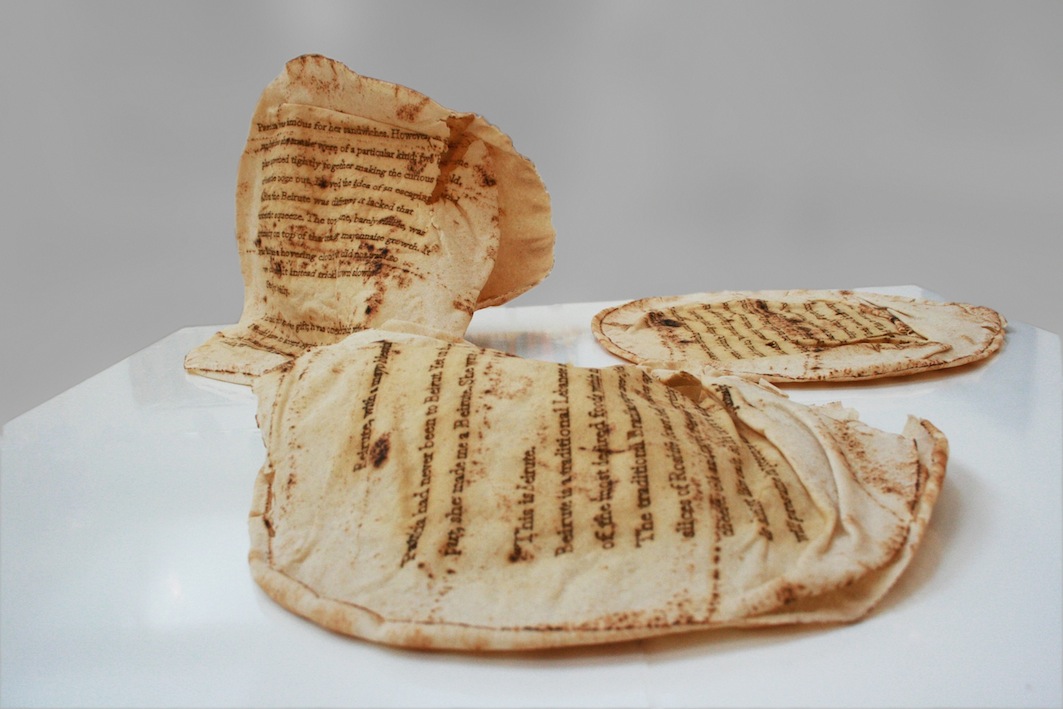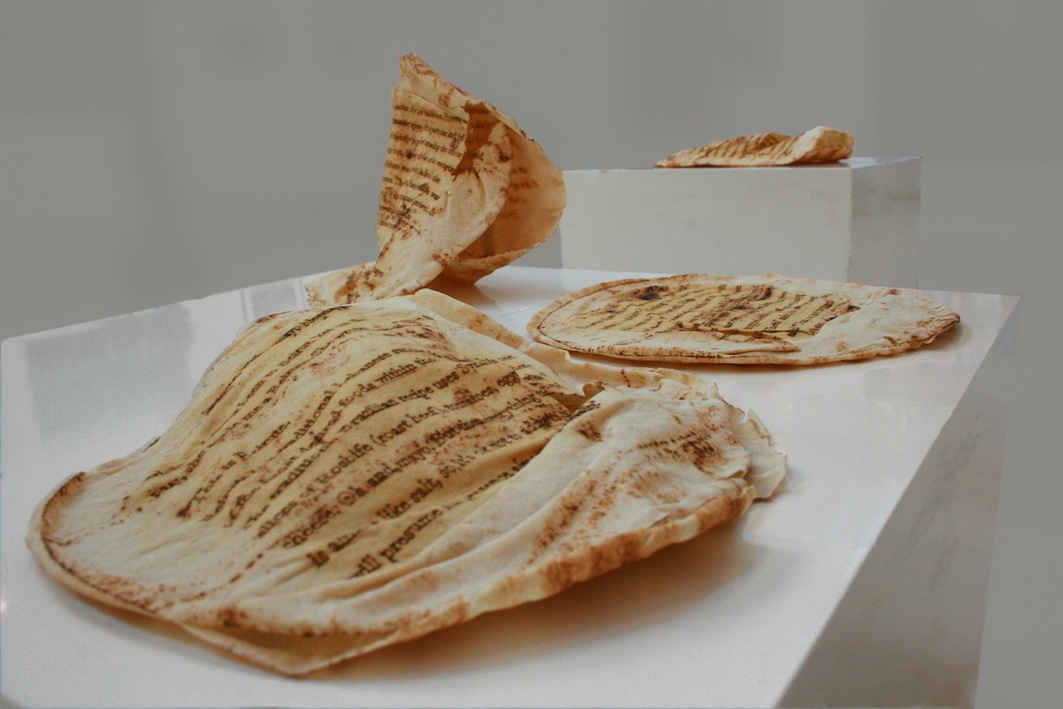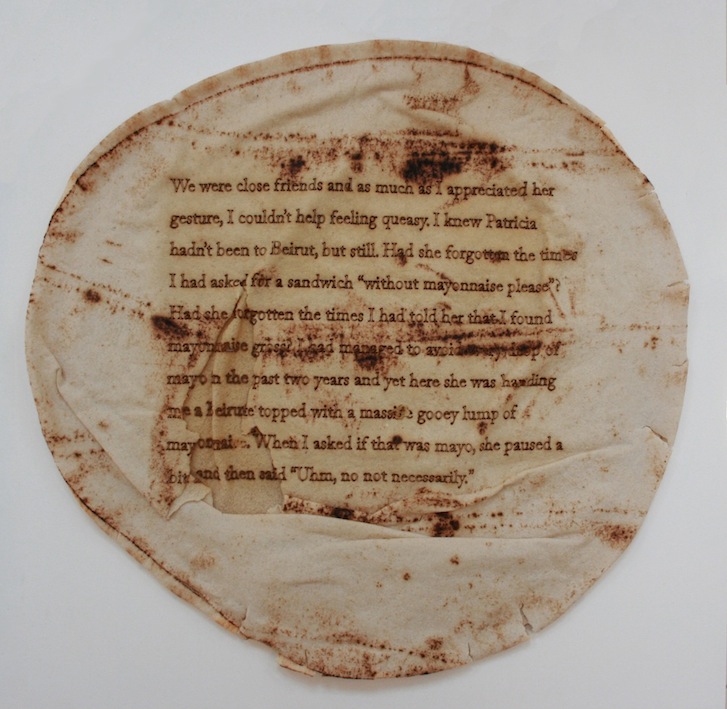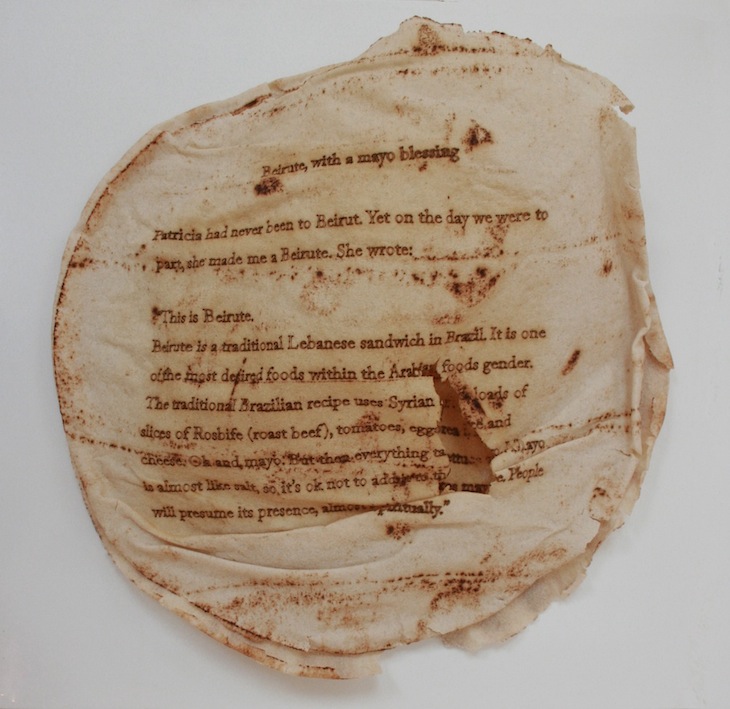Patricia had never been to Beirut. Yet on the day we were to part, she made me a Beirute. She wrote:
“This is Beirute
Beirute is a traditional Lebanese Sandwich in Brazil. It is one of the most desired foods within the Arabian foods gender. The traditional Brazilian recipe uses Syrian bread, loads of slices of Rosbife (roast beef), tomatoes, eggs, lettuce and cheese. Oh and mayo. But then everything takes mayo. Mayo is almost like salt, so it’s ok not to add it to the recipe. People will presume its presence, almost spiritually.”
We were close friends and as much as I appreciated her gesture, I couldn’t help feeling queasy. I knew Patricia hadn’t been to Beirut, but still. Had she forgotten the times I had asked for a sandwich “without mayonnaise please” ? Had she forgotten the times I had told her that I found mayonnaise gross? I had managed to avoid every drop of mayo in the past two years and yet here she was handing me a Beirute topped with a massive gooey lump of mayonnaise. When I asked if that was mayo, she paused a bit and then said “Uhm, no not necessarily.”
Patricia was famous for her sandwiches. However, all the sandwiches she made were of a particular kind: two bold planes squeezed tightly together making the curious blend of the inside ooze out. I loved the idea of an escaping excess. But the Beirute was different; it lacked that characteristic squeeze. The top plane, barely visible, was sitting lightly on top of that teasing mayonnaise growth. It was almost like a hovering cloud that did not want to move or dissipate. It instead trickled down slowly. stealthily. spitefully.
I could not refuse the gift; it was one sandwich with mayo I would have to accept. Patricia had never been to Beirut; yet she managed to burden me, on the day I was leaving London, with an image of Beirute I could not fathom.
I left Beirute safely hidden in a box. But upon my return to Beirut, I felt impelled to see the city, not again, but as if for the first time. I found myself on a tour lead by Tony Chakar, Lebanese architect and writer. He said something I had been summoned to hear, that Beirut was a porous city, that unlike other cities, its buildings were not sandwiched together. There were distinctive spaces in between the buildings. Through them, we could see the depths of the buildings and more importantly we could see “where we were” minutes before. He suggested that those spaces were gateways into consciousness.
I felt queasy again. I imagined the mayo seeping through the breathing pores of Beirute, filling its hollows - its gateways of consciousness- slowly. stealthily. spitefully.





